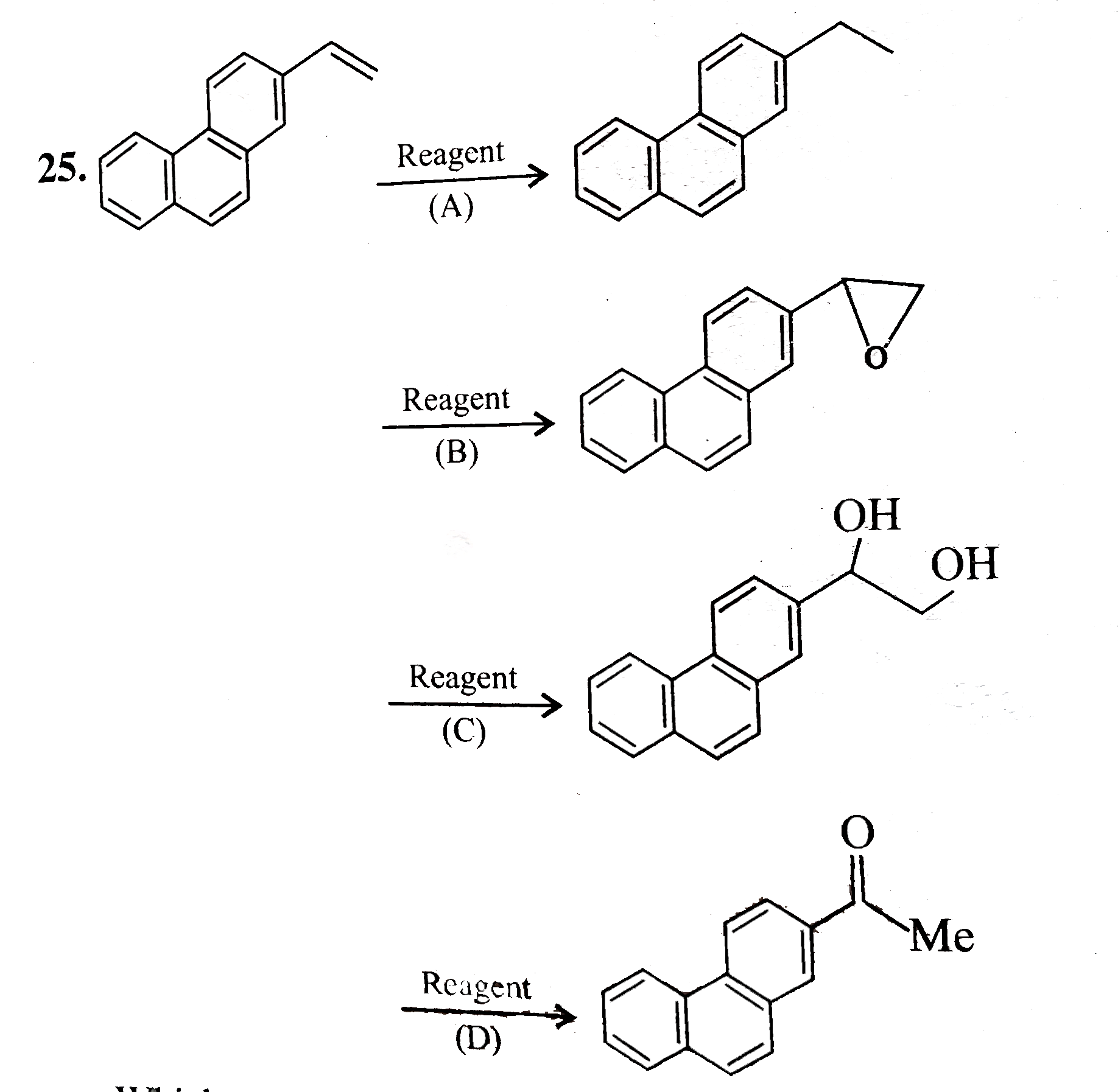In Hogmann degradation of amide the correct order of reagent is :
Br2,KOH,H2o
KOH,Br2,H2O
H2o,KOH,Br2
None of these
The correct Answer is:B
To solve the question regarding the correct order of reagents used in the Hofmann degradation of amides, we will break down the process step by step.
1. Identify the Reaction: The Hofmann degradation is a chemical reaction that involves the conversion of an amide to a primary amine. The reaction typically involves bromine (Br2) and a strong base such as potassium hydroxide (KOH).
2. Reagents Involved: The key reagents in the Hofmann degradation are:
- KOH (potassium hydroxide)
- Br2 (bromine)
- Water (H2O)
3. Order of Reagents:
- First Step: The reaction begins with the addition of KOH. The hydroxide ions (OH-) from KOH act as a base and abstract a proton from the amide, creating a negatively charged intermediate.
- Second Step: Next, Br2 is added. The negatively charged intermediate reacts with bromine, leading to the formation of an acyl bromide.
- Third Step: Finally, water is involved in the reaction. The acyl bromide undergoes hydrolysis, resulting in the formation of a primary amine and the release of carbon dioxide (CO2).
4. Final Order of Reagents: Based on the steps outlined above, the correct order of reagents used in the Hofmann degradation of amides is:
- KOH (first)
- Br2 (second)
- Water (third)
5. Conclusion: Therefore, the correct answer is option B: KOH, Br2, and water.
- KOH (potassium hydroxide)
- Br2 (bromine)
- Water (H2O)
- First Step: The reaction begins with the addition of KOH. The hydroxide ions (OH-) from KOH act as a base and abstract a proton from the amide, creating a negatively charged intermediate.
- Second Step: Next, Br2 is added. The negatively charged intermediate reacts with bromine, leading to the formation of an acyl bromide.
- Third Step: Finally, water is involved in the reaction. The acyl bromide undergoes hydrolysis, resulting in the formation of a primary amine and the release of carbon dioxide (CO2).
- KOH (first)
- Br2 (second)
- Water (third)
Similar Questions
Knowledge Check
Which one is correct group reagent for group cations?
AMn2+Co2+Zn2+Ni2+,dilHClBMn2+Co2+Zn2+Ni2+,NH4Cl+NH4OH+H2SCMn2+Co2+Zn2+Ni2+,NH4Cl+NH4OHDMn2+Co2+Zn2+Ni2+,HCl+H2S
The rate of Hofmann degradation is influenced by the nature of substituent, G. which of the following represents the correct decreasing rate of degradation with various substituents?A−NO2>−Nl>−H>−CH3>−OCH3B−OCH3>−CH2>−Cl>−H>−NO2C−OCH3>−CH3>−H>−Cl>−NO2D−CH3>−Cl>−H>−OCH3>−NO2The conversion of an amide to an amine with one carbon atom less by the action of alkaline hydrohalite is known as Hofmann bromamide degradation

In this reaction, RCONBr is formed from which the reaction has derived its name. Hofmann degradation is an intra molecular reaction.
Which is the rate determining step in Hofman bromamide degradiation ?AFormation of (i)BFormation of (ii)CFormation of (iii)DFormation of (iv)
A: In Hofmann's bromamide degradation amines formed containing one carbon atom less than carbon atoms present in amide.
R: This reaction occurs through the formation of nitrine intermediate
View Solution
Which statements are correct for reagents A, B, C, and D?
View SolutionAmides are:
View SolutionAmong the following compounds (I−II) the correct order of reaction with electrophilic reagent is

View SolutionThe conversion of an amide to an amine with one carbon atom less by the action of alkaline hydrohalite is known as Hofmann bromamide degradation

In this reaction, RCONBr is formed from which the reaction has derived its name. Hofmann degradation is an intra molecular reaction.
How can be conversion (i) to (ii) be brought about ?
View Solution

